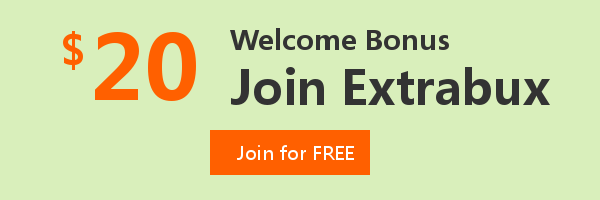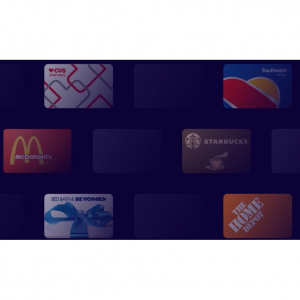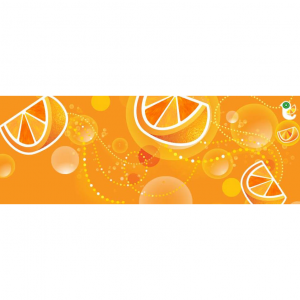
Rosetta Stone vs. Pimsleur vs. Mango Languages: Full Comparison and Reviews 2025
Do you want to learn a new language? There are several language learning platforms for that.Rosetta Stone, Pimsleur, and Mango Languages are three of the most popular language learning platforms on the market.They have some of the best content out there, as well as a great user experience.While they share some similarities, these programs differ significantly in teaching methodologies and lesson structures.Is Rosetta or Pimsleur better?In this article, I'll highlight these key differences so you can quickly determine which language program best fits your needs, regardless of which language you’re attempting to learn.
What is Rosetta Stone?
Created in 1992,Rosetta Stone is one of the original language learning resources, aims to teach you like you learned your native language.Rosetta Stone established offices in major markets around the world, and in 2006, the company was officially renamed after its signature product.2021 marked a year of transformation for the company as it joined the IXL Learning family of brands, along with IXL, Vocabulary.com, Education.com, and Wyzant.Today, Rosetta Stone continues to serve clients worldwide, with offices in six countries.
Rosetta Stone is the choice for many individuals and institutions when it comes to language-learning. It’s the platform recommended by the U.S. military, colleges and universities, companies, and the medical community.It excels at introducing new words and basic grammar (such as conjugation and agreement) at just the right time and in a compelling way. It also does an excellent job of getting you to commit to learning and studying for about 30 minutes per day with its wonderfully clear and structured lessons.

Rosetta Stone offers immersive courses in multiple languages. It uses a unique immersion method, teaching language through images, audio, and text without translation, to mimic the experience of learning a first language. The lessons cover a broad range of language skills including speaking, listening, reading, and writing, with a focus on pronunciation through its TruAccent speech-recognition engine.
What You'll Learn with Rosetta Stone?
Speaking and Pronunciation
With Rosetta Stone lessons, you start speaking your new language instantly. Each lesson starts with key vocabulary, which you'll be asked to speak aloud. As you practice, TruAccent, their proprietary speech recognition software, compares your pronunciation to native speakers and offers immediate feedback. This means you'll learn how well you're saying each word, in addition to learning the word itself. At the end of each unit, you will complete a Milestone. In this speaking activity, you will have a two-way conversation with a pre-recorded native speaker, giving you the chance to practice a real-world conversation in a supportive environment.
Listening Comprehension
As you work through lessons, you will hear words and phrases spoken aloud by native speakers and be asked to choose the image that corresponds. This immersive learning experience will help you to learn the language intuitively through imagery and reasoning instead of rote memorization as you build your listening skills.
Reading and Writing
Rosetta Stone lessons take a scaffolded approach so that as you progress through content, the vocabulary and grammar you are learning increases in complexity. You will start by learning common words, then move gradually through simple phrases, and finally to complete sentences and ideas. Since all of this happens in your new language, there is no need for translation or memorization—instead you'll be reading in the language right away. And with Stories and writing prompts, you are able to apply what you've learned through structured immersion, building ever-increasing reading and writing abilities in your new language.
Languages Available on Rosetta Stone
Rosetta Stone for Schools offers a comprehensive curriculum for 25 languages to support language programs for K-12 and higher education students. With a Rosetta Stone for Schools license, you’ll receive access to all of these languages, giving you the flexibility to support both English language learner programs and world language classes.Here's a more detailed list of the languages available on Rosetta Stone:
|
|
Rosetta Stone Pricing & Subscription Options
Rosetta Stone has three plans to choose from.First, there is a 3-month subscription plan which costs $14.95 per month. Then, there's a 12-month plan which also retails for $10.95 per month. Lastly, there’s a lifetime plan, which costs $399 and gets you access for life to all of Rosetta Stone’s languages.
If you want to test either out, you’ll have to subscribe. Luckily, you can request your money back if you aren’t happy.Rosetta Stone offers a 30-day money-back guarantee.
3-month subscription – $14.95/mo
12-month subscription – $10.95/mo
Lifetime subscription – $399 once-off (undiscounted)
Live classes and one-on-one coaching are extra, but Rosetta Stone isn’t upfront about the costs for these.
Rosetta Stone Pros and Cons
| Pros | Cons |
|
|
Saving Tip:
If you subscribe and make a purchase at Rosetta Stone, don't forget to sign up at Extrabux!(What is Extrabux) , then you can enjoy up to 7% super cashback on your purchase from Extrabux! Sign-Up Bonus: Free to join it & get $20 welcome bonus! Student Benefits:As long as you are a student at school, you can get a free whole year long VIP Card worth $199.
Extrabux.com cooperates with many merchants, such as: Walmart (Up to 4% cashback), Sephora(4% -5% cash back),Dior (Up to 6% cash back), Moosejaw (5% -6% cash back), LOOKFANTASTIC (Up to 10% cash back), Microsoft (Up to 7% cash back) and so on. You can save on buying daily necessities, fashion, beauty, electronic products, broadband installation, mobile communication, air tickets, hotels and other aspects of life!
What is Pimsleur?
If Rosetta Stone is the queen of language learning software, Pimsleur is the forefather of language learning. Established nearly 50 years ago by Dr. Paul Pimsleur,Pimsleur is a foreign language e-learning service based in the United States. “There exists an urgent national need for self-instructional materials in many of the world's languages,” wrote Dr. Pimsleur in 1963. With that goal in mind he developed and recorded Modern Greek, the first of the Pimsleur Language Courses. It was a test of his new theory of self-instruction which resulted from his years of teaching and his study in linguistics and the psychology of language, specifically of how memory could be triggered to best implant a new language.Pimsleur today offers new ways of learning a native language that is more exciting and valuable at the same time.
The language courses and audio-based lessons are grouped by language, category, and level for beginners or intermediate learners. The main focus is on repetition-focused recollection, vocabulary, and learning basic words and phrases. If you have a difficult time adjusting your pronunciation for a new language, Pimsleur is exceptional. It gives you the opportunity to hear words and practice saying them before you see them. The platform is also ideal if you prefer audio-based learning or need to practice a language while multitasking.You download these lessons and complete them anywhere, anytime, even if you’re not connected to a Wi-Fi network.

What You'll Learn with Pimsleur?
Pimsleur uses a unique teaching method from Dr. Paul Pimsleur . The Pimsleur method introduces you to words and concepts, has you repeat them, and then waits a specific amount of time before asking you to recall them. The idea is that these timed intervals between moments of learning and recall strengthen your memory. Pimsleur courses have great content, too.
To start each Pimsleur lesson, you complete a 30-minute audio exercise where a moderator speaking in English walks you through a guided conversation step-by-step.You’ll listen to a few sentences in your target language, the moderator will briefly stop to explain the situation to you, and then he’ll have you participate by answering questions and repeating phrases.This 30-minute audio exercise is the backbone of each Pimsleur lesson, and frankly, it’s what Pimsleur is known for.
You will get skill badges for completing a course. After a placement test and learning new words, phrases, and vocabulary, you will assess yourself through this platform. You will be able to handle real-life situations like native speakers.Like other resources, it also has a game-based system that will let you learn all the languages in an entertaining environment.
Languages Available on Pimsleur
You can learn about 50 languages through Pimsleur including:
|
|
|
|
Pimsleur Pricing & Subscription Options
Pimsleur offers just two options: the Pimsleur Premium plan, which costs $19.95 per month and includes one language, or for $1 more per month, you can upgrade to the Pimsleur All Access plan, which includes all Pimsleur languages.
Pimsleur Premium subscription: $19.95/mo
Pimsleur All Access Monthly subscription: $20.95/mo.
All Access Annual, limited-time offer: Following the 7-day free trial, receive a discount of 20% off the regular annual rate for the first year. Cost of the first year will be $131.96, plus any applicable tax. Subsequent years will automatically renew at $164.95/year.

Besides,Pimsleur has a free 7-day trial.You will not be charged during the free trial period.To keep your subscription once your trial period is over, you will not have to do anything. Use of Pimsleur app is required to access your course material. Free trial is available to new customers only.
Pimsleur Pros and Cons
| Pros | Cons |
|
|
What is Mango Languages?
Mango Languages is an American online language-learning website and mobile app based in Farmington Hills, Michigan, for academic institutions, libraries, corporations, government agencies, and individuals.Jason Teshuba, Mike Teshuba, Ryan Whalen and Mike Goulas founded the service in 2007.They offer courses in over 70 languages, including ESL/ELL courses, and utilizes a conversational approach with native-speaker audio and cultural context to help users learn languages effectively.According to their website, their goal is to provide engaging and interesting lessons that will have you speaking your target language in no time.
Mango languages has well-structured video lectures, units, chapters, and lessons. Each chapter starts with a short explanation of the words you’ll encounter. Each session has approximately 50 tasks (interactive flashcards).
Mango Languages offers a cutting-edge digital adaptive language-learning system, leveraging proven methodologies and language-specific content to foster retention and rapidly enhance conversation skills.Whether you're a K-12 language educator seeking engaging resources for your students, a company aiming to strengthen connections with employees or customers, a library seeking to enrich patron engagement, or a government agency in search of top-tier tools, Mango has the solution you need.

What You'll Learn with Mango Languages?
Mango Languages employs organic language acquisition and emphasizes learning grammatical principles through realistic conversations; features include interactive lessons, spaced repetition, reinforcement exercises, color-coded translations, video content, and Google Translate integration.Another feature allows users to record their pronunciation and compare a visual image of its waveform to that of a native speaker's.Courses are accessible from a web browser or an app, and progress can be synced across devices.
The lesson structure includes three main exercises: learning, speaking quizzes, and critical thinking.Their lessons are quite a bit shorter in length than Pimsleur’s. Each lesson only takes around 5 to 15 minutes to complete. During this lesson, there are three main exercise types that you will complete—learn, speaking quiz, and critical thinking. That’s really it in terms of drill variety—it’s just those three types. Plus, every so often, Mango also tosses in a quick grammar or culture tidbit as well.
Relevant learning material puts your new knowledge into context, boosts your understanding of language structure, and challenges you to practice what you’re learning.
Languages Available on Mango Languages
Mango Languages offers over 70 languages courses including: Danish, Arabic, Bengali, Italian, Japanese, Korean, Hebrew, Indonesian, etc. They also offer a few unusual options such as Shakespearean English and Pirate if you’re looking for new ways to impress your friends. Whether it is your first language to learn or your second, you will find almost every language through Mango Languages.
Mango Languages Pricing & Subscription Options
Mango Languages offers two different subscription plans. There’s a single language option or an “all languages” option, which gives you access to all their different language courses.
Single language subscriptio: $11.99/mo
All languages subscriptio: $19.99/mo
Alternatively, if you want to prepay in advance for an entire year, the single language plan ends up costing a little under $9.99/month, while the all language plan ends up being around $16.67 on a monthly basis.You can enjoy free trial before making a subscription.
Mango Languages Stone Pros and Cons
| Pros | Cons |
|
|
Rosetta Stone vs. Pimsleur vs. Mango Languages: Comparison Table
| Rosetta Stone | Pimsleur | Mango Languages | |
| Languages | 25 | 50+ | 70+ |
| Free Trial | x | ✓ | ✓ |
| Lesson Length | 10-30 mins | 45-60 mins | 10-15 mins |
| Verbal Practice | Moderate Focus | Heavy Emphasis | Moderate Focus |
| Speech Recognition Software | ✓ | ✓ | ✓ |
| Grammar Instruction | Light Focus | Thorough Coverage | Moderate Focus |
| App | ✓ (Apple Store; Google Play) | ✓ (Apple Store; Google Play) | ✓ (Apple Store; Google Play) |
| Ratings (Apple Store) | 4.8 | 4.7 | 4.8 |
| Ratings (Google Play) | 4.6 | 4.3 | 4.8 |
Conclusion: Which One Should You Choose?
In summery,each platform is great in its niche.Choosing the platform that's the best for you is not as hard if you know what you're looking for.It all depends on your learning style and preferences.
Choose Rosetta Stone if:
You are a visual learner and prefer an immersive approach to language learning. Rosetta Stone’s immersive approach to learning, supported by its TruAccent speech technology and engaging visuals, provides a comprehensive language learning experience. This, combined with its broad range of bonus resources, makes Rosetta Stone more effective for learning a new language.
Choose Pimsleur if:
You are an auditory learner and prefer an audio-based approach to language learning. Pimsleur is a good option that will get you speaking much faster than almost any other course. It isn’t perfect by any means, but for $15-$20/mo, it’s a solid choice.
Choose Mango Languages if:
You want to focus on practical, everyday language skills and conversational fluency. And with so many languages to choose from, it’s a great choice for engaging with diverse cultures. The interactive interface and voice comparison feature offer an interesting learning experience, especially if you enjoy a hands-on approach.
Frequently Asked Questions
Can you really become fluent with Rosetta Stone?
Although Rosetta Stone will help you build a solid foundation, it won't make you fluent. When you feel like you've maxed out on learning with Rosetta Stone, you might need to push yourself into situations in which you're actively using the language instead of reacting to an app.
Can you become fluent with Pimsleur?
While the Pimsleur method can be a great starting point for language learning and build a solid foundation, it's unlikely to lead to fluency on its own, and it's best used as part of a broader language learning strategy.
Does the FBI use the Pimsleur method?
Yes. The Pimsleur Method is now used by the FBI, Homeland Security, State Department, Marine Corps, and Navy, Fortune 500 companies such as Mercer and Alcoa, as well as diplomats, journalists, aid workers, and business executives who need to learn a language quickly and effectively.
How fast can you learn with Pimsleur?
If you are a language learner of average ability, and you undertake an “easy” language, it will probably take you about 220 hours to get to the first level of mastery in speaking it, and double that to get to Level 2.
Is Pimsleur more affordable than Rosetta Stone?
No, the typical Pimsleur subscription costs about $8 more per month than Rosetta Stone on average.
Is Mango Languages a good app for beginners?
Yes, you can benefit from using Mango Languages if you’re just starting out. As it focuses on practical conversations, you start building vocabulary from the start. This means you’ll be able to apply what you learn in everyday situations relatively quickly.
Is Mango Languages cheaper than Rosetta Stone?
It depends. If you are looking for a monthly subscription plan, the two companies are very close in terms of pricing. However, if you want long term access, or if your goal is to learn multiple languages, Rosetta Stone offers the better deal.
Is Mango Languages good for grammar?
If you’re looking to get good at grammar, Mango isn’t the best option. While it helps you build the grammar basics, its emphasis on practical conversation might leave you wanting more. It does offer grammar tips, but explanations aren’t comprehensive enough compared to other apps.
How does Rosetta Stone and Mango Languages compare?
Mango Languages emphasizes detailed grammar instruction, unique speech analysis tools, and color-coded sentence structures. In contrast, Rosetta Stone focuses on immersive learning without explicit grammar explanations, offering TruAccent speech technology, engaging visuals, and a broader range of supplemental resources.

Extrabux is an international cashback shopping site, offering up to 30% cashback from 10,000+ Stores!
Squarespace, SkinStore, MATCHESFASHION, The Wall Street Journal, NordVPN, Visible, Armani Exchange, Sam's Club, PUMA, AliExpress, Card Cash, NET-A-PORTER, Udacity, Udemy, Selfridges, LOOKFANTASTIC, Vimeo, Coach Outlet, lululemon, PrettyLittleThing, Booking.com, Ripley's Aquarium, iHerb, Groupon, etc.
Join to get $20 welcome bonus now! (How does Welcome Bonus work?)
Recommendation
-

Is Turkish Airlines Good for International Flights?
-

10 Best & Stylish Winter Coats for Women on NET-A-PORTER in 2025
-

Top & Best 12 Sneaker Apps/Websites for Raffles, Releases & Restocks in 2025
-

7 Best Gift Card Exchange Sites - Buy, Sell and Trade Discount Gift Card Safely and Instanly!
-

Top 9 Professional Skincare Brands for Licensed Estheticians 2025











